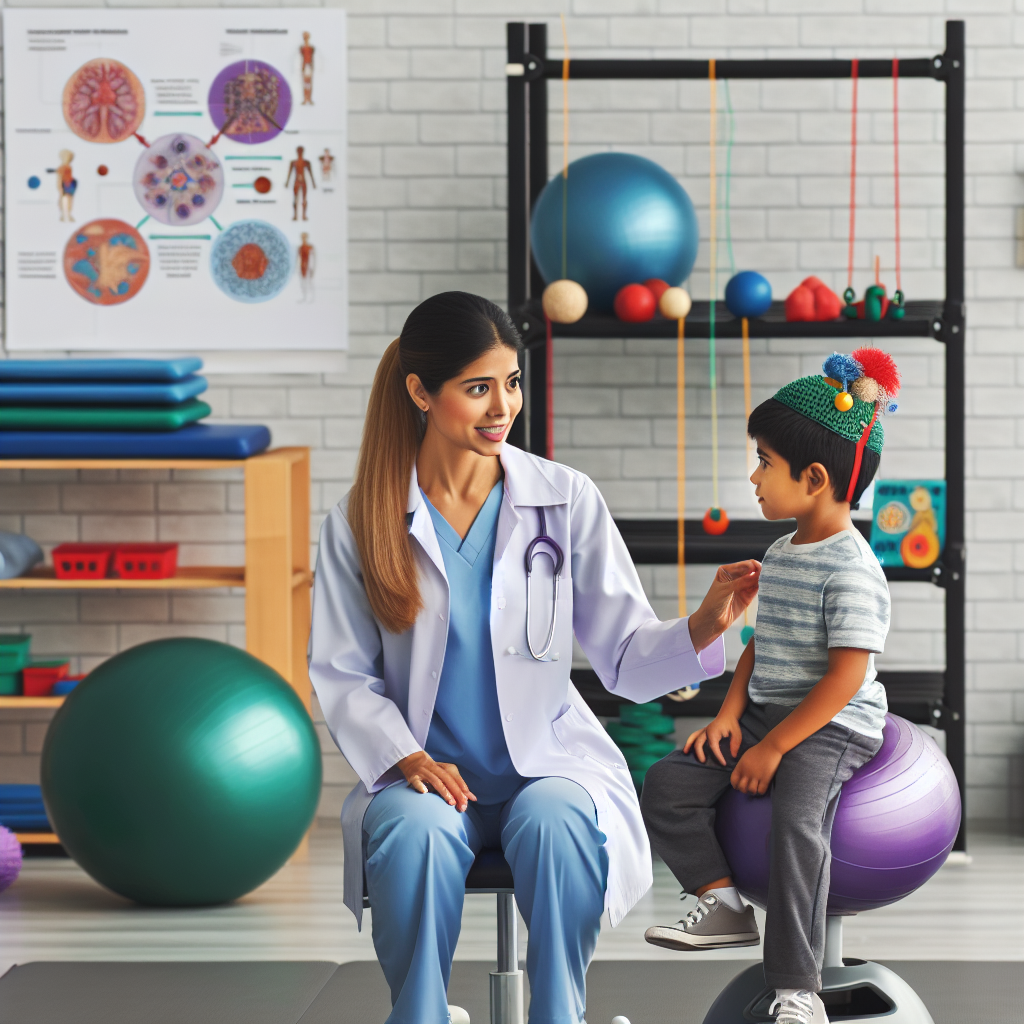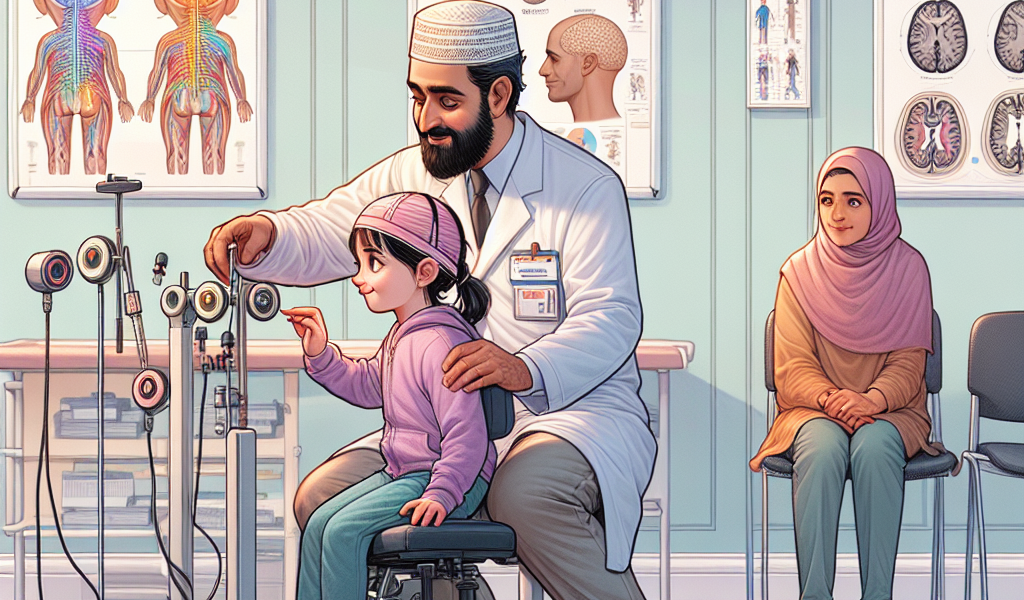Are There Any Specific Neurorehabilitation Techniques Tailored For Children With Neurological Disorders?
So, you’re keen to know if there are any specific neurorehabilitation techniques designed especially for children living with neurological disorders. This article is brimming with insightful information that will enlighten you on the most effective and revolutionary methods employed by leading professionals in the field of pediatric neurorehabilitation. Strap in, and prepare to gain a comprehensive understanding of how these tailored techniques are enhancing the lives of numerous children across the globe.

Understanding Neurological Disorders in Children
Definition of neurological disorders
Neurological disorders: You’ve probably heard the term, but what exactly does it mean? At its most basic, neurological disorders refer to diseases of the central and peripheral nervous system. This might include the brain, spinal cord, cranial nerves, peripheral nerves, nerve roots, autonomic nervous system, neuromuscular junction, and muscles. These disorders are also diverse, and they arise from multiple causes including genetics, physical injuries, or infections.
The impact on children’s life
When a child is diagnosed with a neurological disorder, it turns their life—and the lives of those around them—upside down. Depending on the type and severity of the disorder, a child might face a range of challenges. This could include difficulties with motor skills, impaired cognitive abilities, trouble communicating, or a combination of these. These challenges have a profound impact, not just on the child’s health, but also on their social interactions, education, and overall quality of life.
Common types of neurological disorders in children
You might be surprised to learn just how many neurological disorders can affect children. Some of the most common include cerebral palsy, epilepsy, learning disabilities, Autism spectrum disorder (ASD), attention deficit hyperactivity disorder (ADHD), and Tourette syndrome. While some of these conditions are present at birth, others might not become apparent until later in childhood.
The Importance of Neurorehabilitation for Children
Purpose of neurorehabilitation
Neurorehabilitation is a complex medical process aimed at aiding recovery from a nervous system injury and minimizing any physical and cognitive deficiencies. For children with neurological disorders, neurorehabilitation is often an essential part of treatment. The goal of this process is to enhance the child’s capabilities, helping them to engage fully in life’s activities despite any neurological impairment.
The role of neurorehabilitation in improving quality of life
Neurorehabilitation doesn’t just help to address physical symptoms: it also significantly improves a child’s day-to-day life. With the help of a skilled rehabilitation team, children can develop the confidence and skills to perform activities that might previously have been difficult. And in doing so, they can achieve a greater sense of independence, self-esteem, and overall quality of life.
Long-term benefits of neurorehabilitation in children
One of the biggest advantages of neurorehabilitation for children is its potential for long-term benefits. Through active participation in various therapeutic activities, children can continue to improve and maintain their physical, cognitive, and emotional functioning over time. This allows them to achieve their developmental milestones and lead a fruitful life.
Differences between Adult and Pediatric Neurorehabilitation
Physiological differences
Just like other aspects of medicine, there are significant differences between adult and pediatric neurorehabilitation. Children and adults have different physiological and developmental needs. Their rapidly growing bodies and brains demand different types of treatment and care to achieve the best outcome.
Psychological and emotional differences
In addition to physiological differences, psychological and emotional needs also vary greatly between children and adults. Children may not yet have the cognitive maturity to understand their condition or treatment plans fully. Their emotional resilience is also different. Hence, pediatric neurorehabilitation often involves working closely with a psychologist or mental health professional to address these distinctive needs.
Tailoring rehabilitation techniques according to age and development
Understanding these differences is key to tailoring specific rehabilitation techniques according to a child’s age and developmental stage. Each treatment plan needs to be individualized, taking into account the child’s unique medical, physical, and psychological circumstances.

Neurorehabilitation Techniques Suitable for Children
Physical therapy techniques
Physical Therapy forms an integral part of neurorehabilitation. It helps children improve their motor skills and function. Techniques may include strength training, balance exercises, range of motion exercises, and mobility training.
Occupational therapy techniques
Occupational therapy aids children in mastering the essential activities of daily living. These might include eating, dressing, grooming, and even handwriting. The role of the therapist is crucial in helping the child learn these skills, which in turn, improves their independence and self-reliance.
Speech and language therapy techniques
Speech-language pathologists play a pivotal role in aiding children with neurological disorders, especially those affecting communication and swallowing. These professionals employ various techniques to help children improve their language understanding, speech production, social communication, and cognitive-communication skills.
Experimental Neurorehabilitation Techniques
Promising neurotechnologies
Several emerging neurotechnologies are promising to revolutionize the field of pediatric neurorehabilitation. These include technologies that stimulate the brain and spinal cord, biofeedback, and even robotic therapies. While these are relatively new and still being tested, initial results seem promising.
Innovative therapeutic approaches
In addition to new technologies, innovative therapeutic approaches are also being explored. For instance, incorporating elements like music, art, or game-based therapies can make the rehabilitation process more engaging and enjoyable for children.
The role of ongoing research
Of course, none of these advancements would be possible without ongoing research. Studies continue to uncover new insights into neurological disorders, driving the development of more effective therapies and strategies for children.
The Role of Family in Pediatric Neurorehabilitation
Family-centered care approach
When it comes to pediatric neurorehabilitation, family plays an important role. This results in a family-centered care approach. This means involving the child’s family members in the decision-making process, setting goals, and executing treatment plans.
How families can support the rehabilitation process
Families can be instrumental in supporting their child through the rehabilitation process. From ensuring adherence to therapy schedules, to providing encouragement and emotional support, their involvement is crucial to the child’s ongoing progress.
Emotional support and coping strategies for families
This journey can be challenging for families too. It’s important for them to have access to emotional support and coping strategies. Engaging in support groups or psychotherapy sessions can be beneficial. Doing so helps maintain the family’s resilience and capacity to care for their child effectively.
Multidisciplinary Approach to Pediatric Neurorehabilitation
Need for a team approach
Effective pediatric neurorehabilitation requires a multidisciplinary team approach. It involves pediatricians, rehabilitation specialists, physiotherapists, occupational therapists, speech-language pathologists, and psychologists, all collaborating together. Each team member plays a critical role in management and care.
Roles of different healthcare professionals
These healthcare professionals are involved at different stages of the rehabilitation process. Pediatricians and rehabilitation specialists usually oversee the overall care, while therapists help the child improve specific capabilities and skills. Psychologists are also involved to ensure the child’s emotional and psychological well-being.
Benefits of a coordinated care approach
All this teamwork leads to better, more coordinated care. The multi-disciplinary nature of the team ensures the child’s diverse needs are met in a holistic way. It helps create an individually tailored rehabilitation program, aimed at the child’s overall improvement and well-being.
Examples of Tailored Neurorehabilitation Programs
Case study of a successful program
Every child’s situation is unique, and so the best neurorehabilitation programs are those that are tailored to fit their individual needs. A case-by-case approach allows for targeted interventions, serving as the most effective form of treatment.
Adapting rehabilitation techniques to individual needs
Creating a successful rehabilitation program involves understanding the child’s strengths and weaknesses, and then adapting techniques accordingly. It could mean slowing the pace of therapy or introducing innovative methods to better engage the child.
Challenges and solutions in tailoring programs
Tailoring rehabilitation programs is not without its challenges. These may include understanding the unique characteristics of each disorder, adapting therapies on the fly, and ensuring the child remains engaged throughout the process. Overcoming these challenges requires flexibility, creativity, and most importantly, a keen understanding of the child’s needs and abilities.
Harnessing Technology in Pediatric Neurorehabilitation
Use of assistive devices
Neurorehabilitation has significantly benefited from the use of assistive devices, like special seating systems, mobility aids, and communication devices. These tools foster a child’s independence and help improve their participation in day-to-day activities.
Virtual reality in neurorehabilitation
Virtual reality is another groundbreaking technology shaping the future of pediatric neurorehabilitation. It offers an immersive, interactive environment that can make therapy fun and engaging for children while helping them make considerable progress in their rehabilitation journey.
Telehealth and remote rehabilitation
Telehealth is proving to be a crucial tool, especially during times when in-person therapy is not feasible. Remote rehabilitation sessions through video conference calls allow therapists to guide a child’s therapy sessions from the comfort of their home, increasing access to care.
Future Trends in Pediatric Neurorehabilitation
Predicted advancements in the field
As we look to the future, we can expect that advancements in neuroscience, technology, and genetics will continue to shape the field of pediatric neurorehabilitation. Breakthroughs in areas such as stem cell therapy or gene editing bring hope for novel treatments for neurological disorders.
Influence of technology on future rehabilitation techniques
Advanced technologies are likely to play an increasing role in future rehabilitation techniques. We can anticipate the development of scalable, cost-effective solutions such as wearable sensors, home-based rehabilitation systems, and artificial intelligence-based therapeutic protocols.
The potential impact of personalized medicine on treatment strategies
Personalized medicine, tailoring treatment strategies to an individual’s unique genetic composition, is also set to revolutionize neurorehabilitation. It has the potential to create highly tailored therapy approaches, ensuring each child gets the most effective treatment possible for their specific condition. In conclusion, while children with neurological disorders may face considerable challenges, there is a world of support available. And with the continuous advancements in pediatric neurorehabilitation, their prospects for a healthy, fulfilled life are better than ever.

